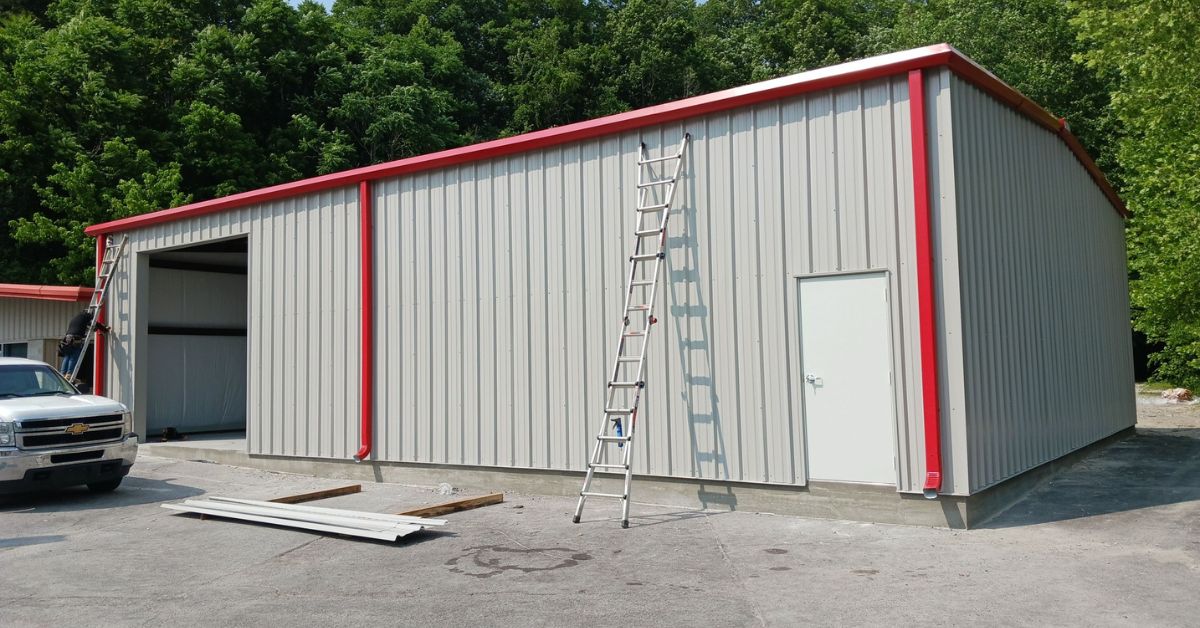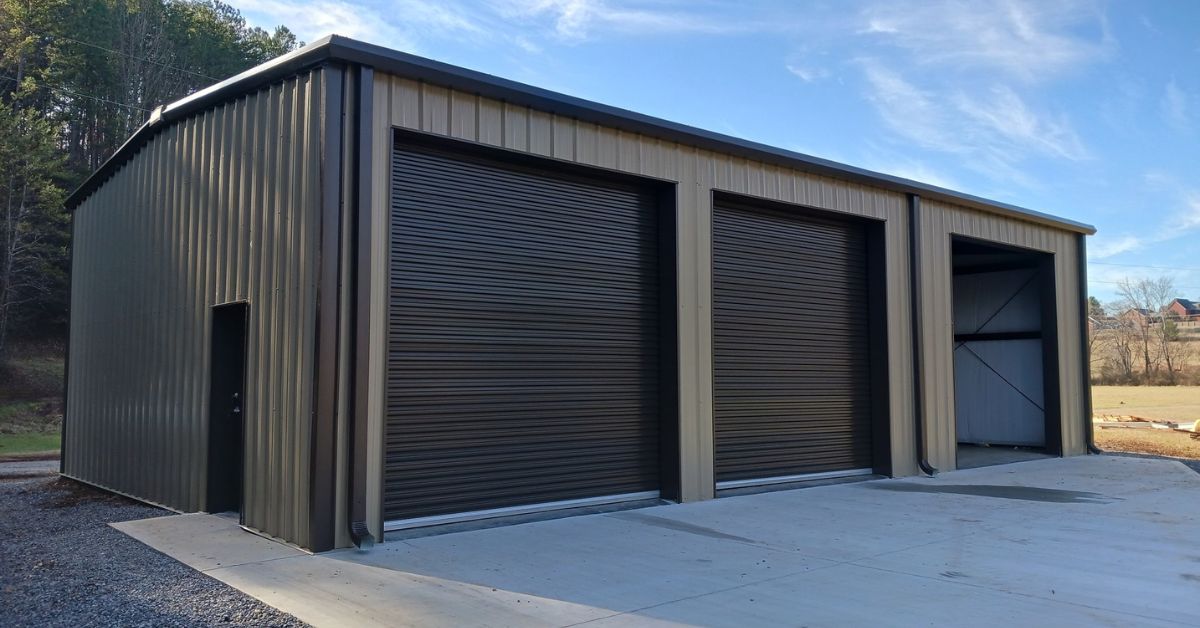Which Type of Foundation You Need for Your Metal Building
Which Type of Foundation You Need for Your Metal Building

When it comes to constructing a metal building, selecting the right foundation is one of the most critical decisions you’ll make. The foundation serves as the backbone of your structure, directly impacting its stability, durability, and long-term performance.
While metal buildings are known for their versatility and strength, they’re only as solid as the foundation they rest on. That’s why we’ve taken the time in this guide to explore the most common foundation types for metal buildings and the key factors that will help you determine which option best suits your project’s specific needs.
Factors to Consider When Choosing a Foundation
When selecting a foundation for your metal building, several important factors come into play. Not only does the foundation need to support your building, but it must also preserve your building’s longevity and performance under various conditions. Here’s a look at what you should consider.
Soil Type and Site Conditions
Your soil composition plays a fundamental role in foundation selection. Clay soils expand and contract in response to changes in moisture, requiring deeper foundations or special considerations to prevent shifting. Sandy soils drain well but may lack the bearing capacity for heavy structures. Rocky terrain offers excellent support but can increase excavation costs.
Outside of that, site preparation is equally important. Proper grading ensures water flows away from your building, while adequate drainage prevents moisture-related issues that can compromise your foundation over time. A professional soil test will reveal your site’s specific characteristics and help guide your choice of foundation.

Building Size and Weight
The dimensions and weight of your metal building directly influence your foundation requirements. A small storage shed may only need a simple concrete slab, while a large commercial facility requires more substantial support. Consider not only the building’s structural weight but also the loads it will carry—heavy machinery, stored materials, or equipment can significantly increase foundation demands.
Structural integrity becomes paramount as building size increases. Larger structures experience greater wind loads and require foundations that can resist uplift forces and lateral movement.
Local Climate and Weather
Climate conditions in your area affect foundation design in several ways. Frost lines determine how deep footings must extend to prevent freeze-thaw damage. Areas with extreme temperature fluctuations may require expansion joints or special concrete mixes.
Moisture levels also matter. Regions with high rainfall or groundwater may need enhanced drainage systems or waterproofing measures. Conversely, arid climates might allow for simpler foundation designs but could present unique soil stability challenges.
Intended Use of the Building
How you plan to use your metal building significantly impacts foundation requirements as well. For example, a basic storage facility needs different support than a workshop with heavy machinery, while commercial buildings often require additional considerations like accessibility compliance, floor drains, or utility accommodations.
Don’t forget to consider future needs as well. If you might expand your building or change its use, planning for these possibilities now can save significant costs later.
Budget and Timeline
Foundation costs can vary dramatically depending on the type you choose. Simple pier foundations are typically the most economical, while full concrete slabs with perimeter walls represent a larger investment. However, the cheapest option upfront isn’t always the most cost-effective long-term choice.
Construction timelines also vary by foundation type. Some options allow for quicker building construction, while others require extended curing times that can delay your project.
Common Types of Foundations for Metal Buildings
With that information out of the way, the most important thing to know before choosing the ideal foundation type for your metal building is how each one has unique characteristics that make it suitable for different applications and site conditions. Understanding these distinctions will help you select the correct foundation for your red iron metal building project.
Concrete Slab Foundation
A concrete slab foundation consists of a flat, poured concrete base that covers the entire footprint of the building. This popular option creates a smooth, level surface that’s ready to use immediately after construction.
Benefits:
- Provides an excellent work surface that’s easy to clean and maintain
- Offers uniform support across the entire building area
- Prevents moisture and pest infiltration from below
- Ideal for buildings requiring a finished floor
Best for: Garages, workshops, retail spaces, and storage buildings where a finished floor surface is non-negotiable. This foundation type works particularly well for smaller to medium-sized buildings up to 40×60 feet.
Perimeter Wall Foundation
A perimeter wall foundation, also known as a stem wall, features a raised concrete wall around the building’s perimeter, often combined with a concrete slab interior. This wall extends above ground level and below the frost line.
Benefits:
- Provides superior support for heavy loads and large buildings
- Allows space for insulation installation, improving energy efficiency
- Offers better moisture control and protection from ground contact
- Creates a barrier against pests and debris
Best for: Larger commercial buildings, heated structures, or buildings in areas with challenging soil conditions. This foundation type is excellent when insulation and moisture control are priorities.

Pier Foundation
Pier foundations use individual concrete piers placed at strategic load-bearing points around the building perimeter and interior. These piers extend below the frost line and support the building frame directly.
Benefits:
- Most cost-effective foundation option
- Quick installation with minimal site disruption
- Works well on uneven or sloped terrain
- Allows natural drainage under the building
Best for: Agricultural buildings, barns, equipment storage, or some temporary structures. This foundation type is ideal when budget constraints are a primary concern or when the building site has challenging topography.
Floating Foundation
A floating foundation sits on or just below the surface without deep anchoring into the ground. This type relies on the soil’s bearing capacity to distribute the building’s weight over a wide area.
Benefits:
- Reduces excavation requirements and costs
- Works effectively in areas with stable, well-draining soil
- Faster installation than deep foundations
- Suitable for lighter structures
Best for: Lightweight metal buildings in areas with stable soil conditions. This option works well for temporary structures or buildings that don’t require permanent attachment to the ground.
Combination Foundations
Many metal building projects benefit from combining foundation types to address specific site conditions or building requirements. This allows people to more easily customize their foundation as needed.
Example applications:
- Concrete slab with perimeter stem walls for enhanced support and insulation
- Pier foundation with partial slab areas for work zones
- Floating slab with reinforced edges for medium-duty applications
The key to successful combination foundations is working with experienced contractors who understand how different foundation elements interact and complement each other. That way, you can ensure your building has the most secure foundation possible.
